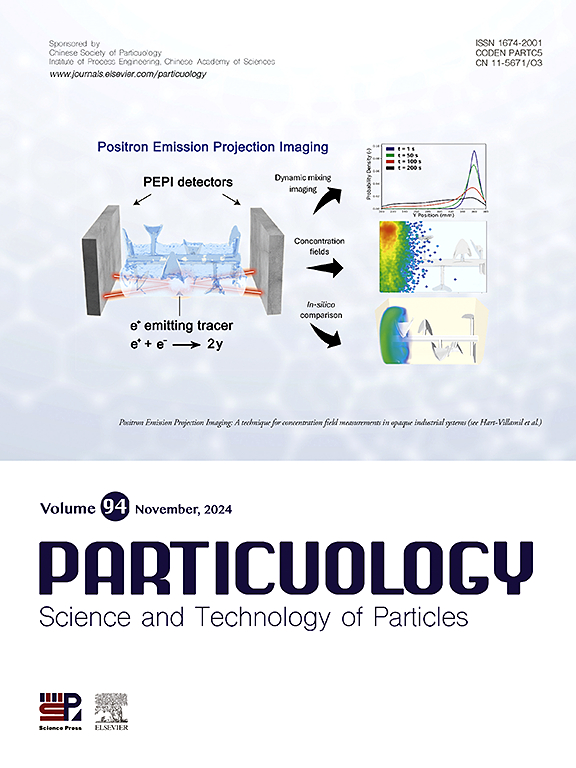Hydrogen adsorption on Ga-doped bilayer graphene: A DFT study
IF 4.1
2区 材料科学
Q2 ENGINEERING, CHEMICAL
引用次数: 0
Abstract
Hydrogen, as an environmentally friendly energy source, is pivotal in its storage methods for its development and effective utilization. Graphene boasts advantages such as high specific surface area, excellent electrical properties, and high tunability, making it highly promising for hydrogen storage applications. Compared to monolayer graphene, bilayer graphene exhibits a more easily controllable bandgap, showcasing its potential for hydrogen storage. Additionally, to further enhance the hydrogen adsorption capability of graphene-based substrates, doping methods are commonly employed to adjust their electrical properties. This study proposes a model for hydrogen adsorption on bilayer graphene to investigate its hydrogen storage capacity. Specifically, density functional theory (DFT) computational methods are utilized to study the adsorption of single and multiple hydrogen molecules on monolayer and bilayer graphene, with or without doping with gallium atoms. Furthermore, the underlying reasons for the enhanced hydrogen adsorption in gallium-doped bilayer graphene are systematically analyzed and elucidated. The research findings indicate that pristine graphene exhibits relatively low sensitivity to hydrogen gas, with adsorption energies of only −0.078 and −0.096 eV for monolayer graphene (MG) and bilayer graphene (BG), respectively. However, upon doping gallium atoms into MG and BG, the adsorption energy significantly increases by approximately 30.8 % and 54.1 %. For adsorbing 8 H2, with average adsorption energies reaching -0.102 eV and −0.163 eV, which is primarily due to the electron in the s orbital of H has been transferred to the d orbital of transition metal Ga. These results indicate that gallium-doped bilayer graphene holds great promise as a hydrogen storage material.

氢在掺ga双层石墨烯上的吸附:DFT研究
氢作为一种环境友好型能源,其储存方法是开发和有效利用的关键。石墨烯具有高比表面积、优异的电学性能和高可调性等优点,在储氢方面具有很大的应用前景。与单层石墨烯相比,双层石墨烯具有更容易控制的带隙,显示出其储氢潜力。此外,为了进一步增强石墨烯基衬底的氢吸附能力,通常采用掺杂方法来调整其电学性能。本研究提出了一种双层石墨烯吸附氢的模型,以研究其储氢能力。具体而言,利用密度泛函理论(DFT)计算方法研究了掺杂或不掺杂镓原子时单个和多个氢分子在单层和双层石墨烯上的吸附。此外,系统地分析和阐明了掺杂镓双层石墨烯中氢吸附增强的根本原因。研究结果表明,原始石墨烯对氢气的敏感性相对较低,单层石墨烯(MG)和双层石墨烯(BG)的吸附能分别为- 0.078和- 0.096 eV。然而,在MG和BG中掺杂镓原子后,吸附能显著提高了约30.8%和54.1%。对于8 H2的吸附,平均吸附能达到-0.102 eV和- 0.163 eV,这主要是由于H的s轨道上的电子转移到了过渡金属Ga的d轨道上。这些结果表明,掺镓双层石墨烯作为储氢材料具有很大的前景。
本文章由计算机程序翻译,如有差异,请以英文原文为准。
求助全文
约1分钟内获得全文
求助全文
来源期刊

Particuology
工程技术-材料科学:综合
CiteScore
6.70
自引率
2.90%
发文量
1730
审稿时长
32 days
期刊介绍:
The word ‘particuology’ was coined to parallel the discipline for the science and technology of particles.
Particuology is an interdisciplinary journal that publishes frontier research articles and critical reviews on the discovery, formulation and engineering of particulate materials, processes and systems. It especially welcomes contributions utilising advanced theoretical, modelling and measurement methods to enable the discovery and creation of new particulate materials, and the manufacturing of functional particulate-based products, such as sensors.
Papers are handled by Thematic Editors who oversee contributions from specific subject fields. These fields are classified into: Particle Synthesis and Modification; Particle Characterization and Measurement; Granular Systems and Bulk Solids Technology; Fluidization and Particle-Fluid Systems; Aerosols; and Applications of Particle Technology.
Key topics concerning the creation and processing of particulates include:
-Modelling and simulation of particle formation, collective behaviour of particles and systems for particle production over a broad spectrum of length scales
-Mining of experimental data for particle synthesis and surface properties to facilitate the creation of new materials and processes
-Particle design and preparation including controlled response and sensing functionalities in formation, delivery systems and biological systems, etc.
-Experimental and computational methods for visualization and analysis of particulate system.
These topics are broadly relevant to the production of materials, pharmaceuticals and food, and to the conversion of energy resources to fuels and protection of the environment.
 求助内容:
求助内容: 应助结果提醒方式:
应助结果提醒方式:


